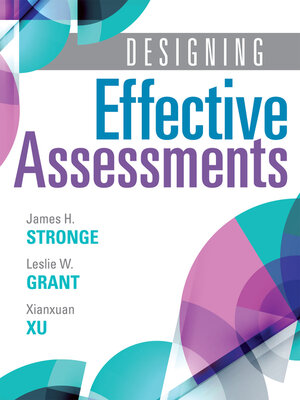Designing Effective Assessments
ebook ∣ Accurately Measure Students' Mastery of 21st Century Skills
By James H. Strong

Sign up to save your library
With an OverDrive account, you can save your favorite libraries for at-a-glance information about availability. Find out more about OverDrive accounts.
Find this title in Libby, the library reading app by OverDrive.



Search for a digital library with this title
Title found at these libraries:
| Library Name | Distance |
|---|---|
| Loading... |
Assessment is a critical component of effective teaching and learning. To gain valuable assessment data and make effective use of them, educators must have the right tools in place to create quality assessments. Designed specifically for K–12 educators, this title presents ten key assessment design tools and clearly outlines how to incorporate each tool into daily classroom practices. With quality assessment processes in place, teachers at all grade levels can accurately measure student mastery and shape instruction to increase achievement.
Benefits
Contents
Introduction
Chapter 1: Enhancing Validity and Reliability of Assessments
Chapter 2: Measuring Students' Attitudes, Dispositions, and Engagement Using Affective Assessment
Chapter 3: Assessing Student Criterion-Referenced Learning Using Performance-Based Assessment
Chapter 4: Documenting Student Progress through Portfolios
Chapter 5: Creating Rubrics for Student Feedback
Chapter 6: Building Practical Grading Practices
Chapter 7: Building Valid and Reliable Grading Practices
Chapter 8: Improving Communication through Standards-Based Grading
Chapter 9: Understanding and Using Standardized Assessment Data
Chapter 10: Teaching Test-Taking Skills







